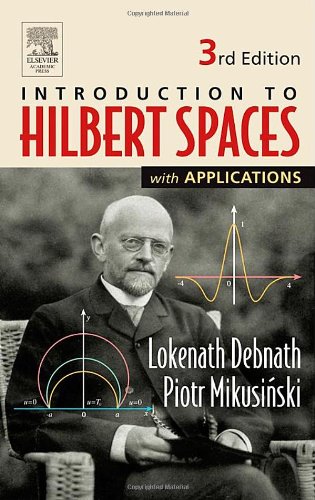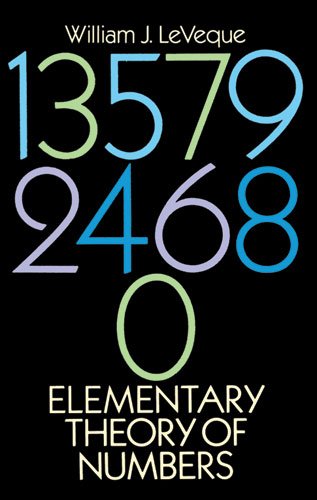- 2 402 202 книги
- Поиск
libcats.org












The Creative Mind: Myths and Mechanisms
Margaret A. BodenThis work was initially published in 1990, amidst a bumper crop of books about the brain, mind and consciousness. Neuroscientists, psychologists and no-nonsense philosophers were setting off to reclaim the mind from the dark superstitions of religion, art and human specialness. Psychologist / philosopher Margaret Boden decided to stake a claim in the territory of human creativity. In "The Creative Mind: Myths & Mechanisms", she seeks to vanquish those who would defend the irreducible quality of human consciousness with the wonders of its creativity.
Boden tries diligently to capture the squishy idea of creativeness. She looks at famous examples of creativity in the arts and the sciences, and comes up with a number of "heuristics" or rules of thumb about it. She then analyzes the creative nature of children in various ways (including analysis of typical children's drawings across ages and stages of development). Next, she examines how computer programs, especially massively parallel neural-networks, are making progress in mimicking human problem-solving. Some programs have indeed come up with problem solutions that humans had not though of.
Perhaps then creativity isn't such a mysterious thing. Evolution has given brains with powerful problem-solving capacity to the homo sapiens species, explaining much of their success (thus far). Historical creativity thus becomes a matter of the right person being in the right situation at the right time. The more creative people among us are those with brain abilities most appropriate to the challenge at hand (and the foresight to recognize the value of their thoughts). Einstein, Mozart and Shakespeare alike had the right combination of mind strengths relative to their particular surroundings, allowing them to come up with surprising new works. The other 99.999 percent of us don't change history, but still have occasional moments when our brains link conceptual spaces together in novel and useful ways (to us, anyway).
If evolution has given us creative ability, then creativity should reflect the nature of evolution. I.e., it must progress through random trial and error. As we teach our computing machines to mimic the "parallel emergence" process of the brain, we can speed up this process by "rolling the dice" faster and more often. Thus, we now have machines that come up with chess strategies not previously considered. Our chess masters, unassisted, probably would have derived these tactics eventually; but computers can think faster than we can (that is, once we teach them how to think).
To nail all of this down, Dr. Boden expands upon the amazing things happening in the world of computerized thinking. She introduces various computer systems designed to solve problems in mathematics, science, psychology, political analysis, and even art. Perhaps the most famous to date is the IBM Deep Blue chess program; but another very interesting example is EURISKO, a strategy program used to compete against human teams in a naval battle simulation. EURISKO came up with a surprising tactic that seemed all wrong, i.e. lots of little "one shot and out" boats (versus standard fleet strategy based on a smaller number of well-armed, well-defended ships grouped together). Of course, the computer tactic surprised everyone and won -- two years in a row.
But has Dr. Boden won? Have Deep Blue and EURISKO fully captured the essence of human creativity? Are our own minds and our conscious experiences just a bigger, more developed version of these new problem-solving machines?
Unfortunately, Dr. Boden hardly spends time comparing human creativity with examples of creative acts within the higher animal kingdom. In the final chapter she ponders the hoverfly and reassures us that we are not insects, even if we all are ultimately machine-like. But what about dolphins and chimps? Shouldn't their creativity be a lot more like ours? Chimps and dolphins have been observed finding creative solutions to survival challenges in their environment, both individually and socially. But they don't do art. They don't set up monuments marking the graves of their comrades. They don't evidence concern about justice, equality and ultimate meaning in the universe.
Humans, by contrast, expend resources on these things. We have obviously gone through a mental "phase shift", discovering something ontologically different. Yes, this "emergence" certainly involves the exchange of conceptual symbols (i.e., language) and the survival benefits this brings. And yet, our speaking ability was formed as much to capture the "poetic feeling" as to capture food and lightening.
Our machines can come up with creative music, artwork and legal systems; but only because we taught them how. They could not have derived the basic inspirations behind such things. Our machines share the same physical processes that support our own lives, but differ in a fundamental way. They are hot-house flowers. They do not face the challenge of survival amidst limited resources. They worry not where their next kilowatt is coming from. They don't need a wide range of continual information from the environment to survive. They don't see the stars at night and the sun rising; they don't feel the sting of snow on their frame covers, or the warmth from a companion's CPU; they don't smell the flowers; they don't taste the sweetness of apples (nor the amps being consumed through their power assemblies). As such, there are things about the world that we "know" that machines cannot.
(That is, unless we turn our machines loose to survive and reproduce on their own, as in science fiction. But science fiction warns us over and over just how badly that scenario could go, if our new machine species turns out even a fraction as imperfect and neurotic as the human race.)
Unfortunately, Dr. Boden doesn't reach this level of analysis. She stays close to the traditional philosophy-of-mind debate. She bogs down fighting the "mental stuff" argument (i.e., only the carbon-based chemistry that we know of in our ecosphere can support mental life), and in evicting John Searle from his "Chinese Room". She wins many battles, but isn't very creative in justifying the alleged war victory of computationalism.
Boden tries diligently to capture the squishy idea of creativeness. She looks at famous examples of creativity in the arts and the sciences, and comes up with a number of "heuristics" or rules of thumb about it. She then analyzes the creative nature of children in various ways (including analysis of typical children's drawings across ages and stages of development). Next, she examines how computer programs, especially massively parallel neural-networks, are making progress in mimicking human problem-solving. Some programs have indeed come up with problem solutions that humans had not though of.
Perhaps then creativity isn't such a mysterious thing. Evolution has given brains with powerful problem-solving capacity to the homo sapiens species, explaining much of their success (thus far). Historical creativity thus becomes a matter of the right person being in the right situation at the right time. The more creative people among us are those with brain abilities most appropriate to the challenge at hand (and the foresight to recognize the value of their thoughts). Einstein, Mozart and Shakespeare alike had the right combination of mind strengths relative to their particular surroundings, allowing them to come up with surprising new works. The other 99.999 percent of us don't change history, but still have occasional moments when our brains link conceptual spaces together in novel and useful ways (to us, anyway).
If evolution has given us creative ability, then creativity should reflect the nature of evolution. I.e., it must progress through random trial and error. As we teach our computing machines to mimic the "parallel emergence" process of the brain, we can speed up this process by "rolling the dice" faster and more often. Thus, we now have machines that come up with chess strategies not previously considered. Our chess masters, unassisted, probably would have derived these tactics eventually; but computers can think faster than we can (that is, once we teach them how to think).
To nail all of this down, Dr. Boden expands upon the amazing things happening in the world of computerized thinking. She introduces various computer systems designed to solve problems in mathematics, science, psychology, political analysis, and even art. Perhaps the most famous to date is the IBM Deep Blue chess program; but another very interesting example is EURISKO, a strategy program used to compete against human teams in a naval battle simulation. EURISKO came up with a surprising tactic that seemed all wrong, i.e. lots of little "one shot and out" boats (versus standard fleet strategy based on a smaller number of well-armed, well-defended ships grouped together). Of course, the computer tactic surprised everyone and won -- two years in a row.
But has Dr. Boden won? Have Deep Blue and EURISKO fully captured the essence of human creativity? Are our own minds and our conscious experiences just a bigger, more developed version of these new problem-solving machines?
Unfortunately, Dr. Boden hardly spends time comparing human creativity with examples of creative acts within the higher animal kingdom. In the final chapter she ponders the hoverfly and reassures us that we are not insects, even if we all are ultimately machine-like. But what about dolphins and chimps? Shouldn't their creativity be a lot more like ours? Chimps and dolphins have been observed finding creative solutions to survival challenges in their environment, both individually and socially. But they don't do art. They don't set up monuments marking the graves of their comrades. They don't evidence concern about justice, equality and ultimate meaning in the universe.
Humans, by contrast, expend resources on these things. We have obviously gone through a mental "phase shift", discovering something ontologically different. Yes, this "emergence" certainly involves the exchange of conceptual symbols (i.e., language) and the survival benefits this brings. And yet, our speaking ability was formed as much to capture the "poetic feeling" as to capture food and lightening.
Our machines can come up with creative music, artwork and legal systems; but only because we taught them how. They could not have derived the basic inspirations behind such things. Our machines share the same physical processes that support our own lives, but differ in a fundamental way. They are hot-house flowers. They do not face the challenge of survival amidst limited resources. They worry not where their next kilowatt is coming from. They don't need a wide range of continual information from the environment to survive. They don't see the stars at night and the sun rising; they don't feel the sting of snow on their frame covers, or the warmth from a companion's CPU; they don't smell the flowers; they don't taste the sweetness of apples (nor the amps being consumed through their power assemblies). As such, there are things about the world that we "know" that machines cannot.
(That is, unless we turn our machines loose to survive and reproduce on their own, as in science fiction. But science fiction warns us over and over just how badly that scenario could go, if our new machine species turns out even a fraction as imperfect and neurotic as the human race.)
Unfortunately, Dr. Boden doesn't reach this level of analysis. She stays close to the traditional philosophy-of-mind debate. She bogs down fighting the "mental stuff" argument (i.e., only the carbon-based chemistry that we know of in our ecosphere can support mental life), and in evicting John Searle from his "Chinese Room". She wins many battles, but isn't very creative in justifying the alleged war victory of computationalism.
EPUB | FB2 | MOBI | TXT | RTF
* Конвертация файла может нарушить форматирование оригинала. По-возможности скачивайте файл в оригинальном формате.
Популярные книги за неделю:

Проектирование и строительство. Дом, квартира, сад
Автор: Петер Нойферт, Автор: Людвиг Нефф
Размер книги: 20.83 Mb

Система упражнений по развитию способностей человека (Практическое пособие)
Автор: Петров Аркадий НаумовичКатегория: Путь к себе
Размер книги: 818 Kb

Сотворение мира (3-х томник)
Автор: Петров Аркадий НаумовичКатегория: Путь к себе
Размер книги: 817 Kb

Радиолюбительские схемы на ИС типа 555
Автор: Трейстер Р.Категория: Электротехника и связь
Размер книги: 13.64 Mb

Момент истины (В августе сорок четвертого...)
Автор: Богомолов Владимир ОсиповичКатегория: О войне
Размер книги: 1.83 Mb
Только что пользователи скачали эти книги:

Introduction to Hilbert Spaces with Application
Автор: Lokenath Debnath, Автор: Piotr Mikusinski
Размер книги: 3.54 Mb

Оценка с человеческим лицом
Автор: Гурина АлександраКатегория: Научная литература
Размер книги: 10 Kb

In Defense of Dolphins: The New Moral Frontier (Blackwell Public Philosophy Series)
Автор: Thomas WhiteКатегория: Общественные науки прочие, Философия
Размер книги: 1.58 Mb

Elementary Theory of Numbers (Dover books on advanced mathematics)
Автор: William J. LeVequeКатегория: Математика
Размер книги: 2.18 Mb

Cost Accounting: A Managerial Emphasis (10th Edition)
Автор: Charles T. Horngren, Автор: George Foster, Автор: Srikant M. Datar, Автор:
Размер книги: 48.01 Mb

Environmental Protection and Economic Well-Being: The Economic Pursuit of Quality
Автор: Thomas Michael Power
Размер книги: 620 Kb

Çocuk ve Toplum Gelişim ve Eğitim Üzerine Denemeler
Автор: David ELKIND (Çeviri: Demet ÖNGEN)
Размер книги: 853 Kb



